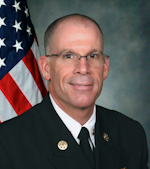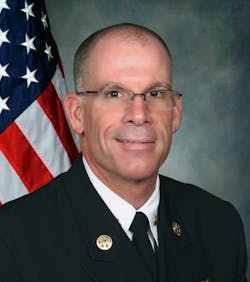On March 29, 2015, Fresno, CA, Fire Captain Pete Dern was critically injured after falling through the roof of a residential structure while attempting to perform vertical ventilation. The incident, which was captured on video by a local resident and broadcast on the national news, thrust the Fresno Fire Department and its members into the national spotlight. Keyboard tacticians from all corners of the globe pounced on the opportunity to cast a shadow of shame on the department and everyone involved.
Unbeknownst to these critics, eight days after this tragic and unfortunate event, Fresno Fire Chief Kerri Donis took decisive action and assembled a Multi-Agency Serious Accident Review Team (SART). In an unprecedented fashion, Chief Donis gave this team of outsiders full authority to thoroughly investigate any and all associated factors, without concern for organizational disruption or personal discomfort.
Following an exhaustive seven-month investigation, the final report, which was released in late January, encompasses 270 pages of technical detail related to the Cortland Incident and the 138 years of experience and proud traditions of the Fresno Fire Department.
What makes this report so unique, aside from its depth and detail, is the fact that this team, under the direction of the fire chief, took it upon themselves to forego judgment of a single incident or organization, and expand their efforts to pursue and promote change, not only for the members of the Fresno Fire Department but also for the betterment of the American fire service.
While reviewing the Cortland Incident, the SART also reviewed 77 NIOSH reports from fire fatalities over the last 10 years. Disturbingly, but not surprisingly, the team identified the same factors that contributed to the Cortland Incident were also found and documented in 70 of the 77 NIOSH reports.
One of the most poignant and critical questions posed by the SART, and what I believe to be a critical takeaway, is this: “Why, with these factors being common in so many serious injury and LODD reports, do we choose to ignore them as an industry? Or worse yet, why do we acknowledge them but fail to act? We have years of these investigative reports with documented factors, recommendations, as well as more scientifically proven, modern firefighting methods, that can and do make this profession safer for our people, yet we continue with business as usual, or simply write firefighting off as just being a dangerous profession.”
The 2004 Life Safety Summit assembled more than 200 fire service professionals and charged them with developing a formidable plan for reducing firefighter injuries and LODDs. The resulting 16 Life Safety Initiatives include Initiative No. 1: Define and advocate the need for a cultural change within the fire service relating to safety, incorporating leadership, management, supervision, accountability and personal responsibility.
Ten years later, at the second Life Safety Summit, these 16 Initiatives were confirmed to be critical factors in helping reduce firefighter injuries and LODDs. Sadly, now 12 years later (nearly to the day), we continue to suffer the consequences of predictable and preventable events.
To some, a cultural change is viewed as an attack on the longstanding traditions of the American fire service, yet others view it for what it is truly meant to be—an opportunity to improve the safety and operational effectiveness of our proud profession. When our traditions impede our forward progression or compromise our operational safety, they must be relegated to and savored in the halls of history.
As firefighters we are seldom stern and forthright critics of our own performance, and only in the rarest of occasions have the doors of opportunity opened themselves to allow an outside group of our peers to constructively review and analyze the inner workings of an organization. To the credit of Chief Donis and the Cortland Incident Multi-Agency SART, this investigation will undoubtedly become a playbook for change and opportunity for anyone who takes the time to read and apply these lessons to their respective organizations.
While the pain and anguish of this event will forever be remembered within the ranks of the Fresno Fire Department, it should also be remembered that the lessons learned and shared will forever serve to improve the American fire service.

Timothy E. Sendelbach | Editor-in-Chief
Timothy E. Sendelbach is a 30-year student and educator of the fire and emergency services, and former editor-in-chief for Firehouse. He has served as an assistant fire chief with the North Las Vegas, NV, Fire Department, as the chief of training for Savannah (GA) Fire & Emergency Services and as assistant fire chief for Missouri City, TX, Fire & Rescue Services. He is a credentialed Chief Fire Officer and Chief Training Officer and has earned a master’s degree in leadership from Bellevue University, bachelor’s degrees in fire administration and arson and an associate’s degree in emergency medical care from Eastern Kentucky University.






